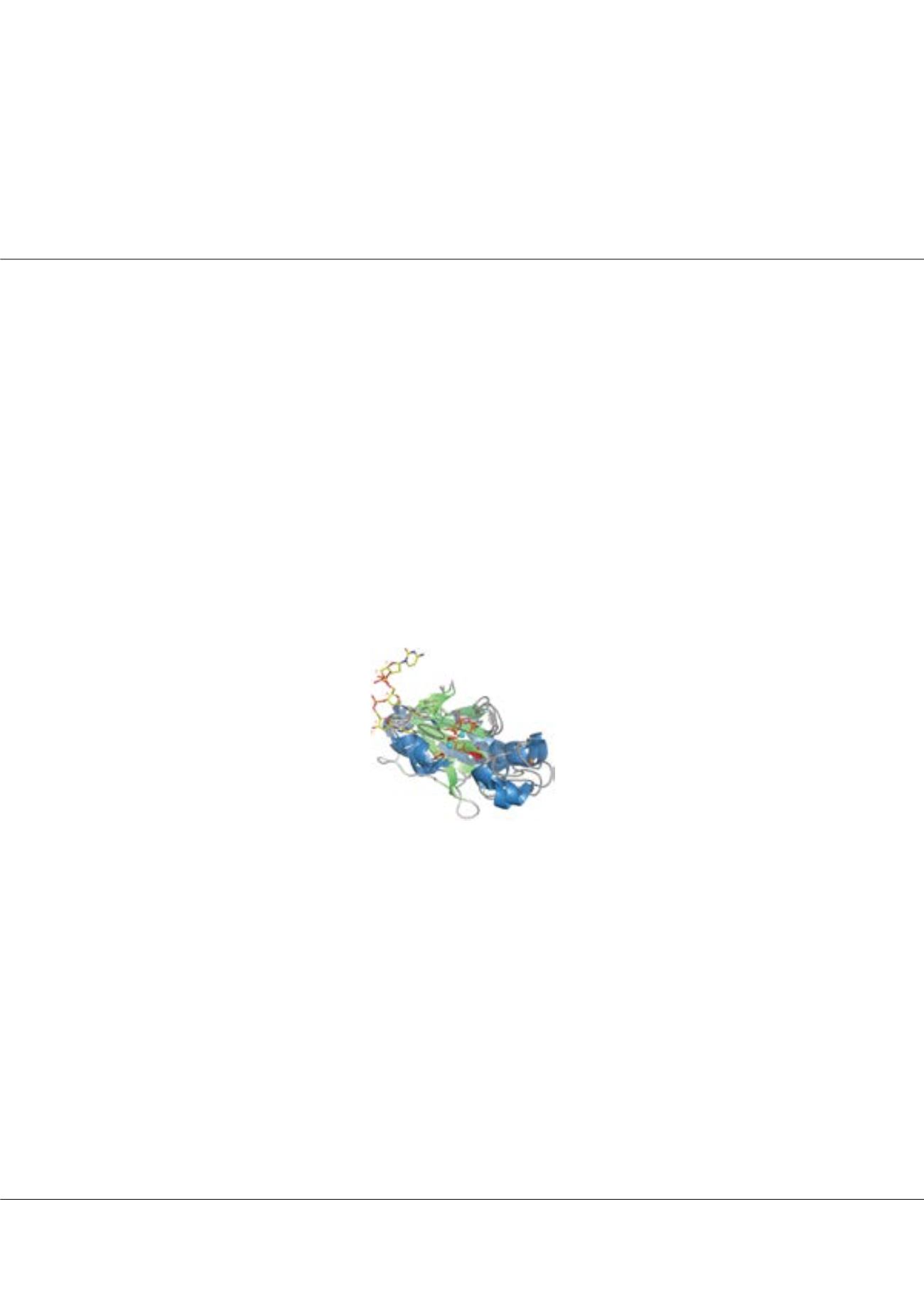

Page 49
conferenceseries
.com
Volume 10, Issue 8 (Suppl)
J Proteomics Bioinform, an open access journal
ISSN: 0974-276X
Structural Biology 2017
September 18-20, 2017
9
th
International Conference on
Structural Biology
September 18-20, 2017 Zurich, Switzerland
New insights into pRN1 priming: Structural changes support specific DNA recognition and catalysis
Julien Boudet
1
, Jean-Christophe Devillier
2
, Georg Lipps
2
and
Frédéric H T Allain
1
1
ETH Zurich, Switzerland
2
University of Applied Sciences Wiener Neustadt, Australia
P
rimases are single-strandedDNA dependent polymerases that synthesize RNA/DNA primers during replication. A primase,
a DNA polymerase and an helicase compose the replication machinery of the archaeal plasmid pRN1. The structure of the
archaeal functional primase domain has been solved by X-ray crystallography and it revealed an heteromeric structure with a
catalytic prim/pol domain tethered to a novel helix bundle domain. We investigated the NMR structure of the functional pRN1
primase domain in complex with a single-stranded DNA template containing the GTG motif. We showed that the catalytic
prim/pol domain of this 38 kDa enzyme is not required for template binding. Intermolecular contacts detected exclusively
between the helix bundle domain and the DNA led us to isolate specifically this structurally independent unit. Our results are
compatible with a conformational switch between a template-bound open state and a closed active complex. We solved the
solution structures of the helix bundle domain in complex with the single-stranded DNA template alone and upon cofactors
addition. Affinity measurements validated our structural data demonstrating the importance of residues located in helices 10
and 12 for the interaction with the GTG motif and confirmed the specificity improvement observed upon cofactors binding. In
association with functional assays, these novel transient structures bring new perspectives and will help us to characterize the
molecular steps required for priming.
Biography
Julien Boudet has completed his PhD degree in Structural Biology and Biophysics from the University of Grenoble (Joseph Fourier University) in France under
the supervision of Prof. Jean-Pierre Simorre. During his thesis, he has learned nuclear magnetic resonance (NMR) spectroscopy and used this powerful method
to investigate proteins and oligonucleotides structures, molecular mechanisms underlying antibiotic resistance and viral proteins interactions. After Graduating,
he has joined the group of Prof. Frédéric Allain in ETH Zurich as a Researcher. He has focused his investigations on the DNA replication machinery and, on the
primase-mediated catalysis. He set up an innovative computational methods to investigate challenging biological systems and demonstrated the role of cofactors
in improving the pRN1 primase specific template recognition.
boudetj@mol.biol.ethz.chJulien Boudet et al., J Proteomics Bioinform 2017, 10:8(Suppl)
DOI: 10.4172/0974-276X-C1-0100
Figure1:
Structural superimposition of catalytic cores from the pRN1 (1RO2), P. horikoshii (1V34), H. sapiens (4LIL) and
S. cerevisiae (4LIM) primases as well as the polymerase domain of the M. tuberculosis ligase D (3PKY).


















